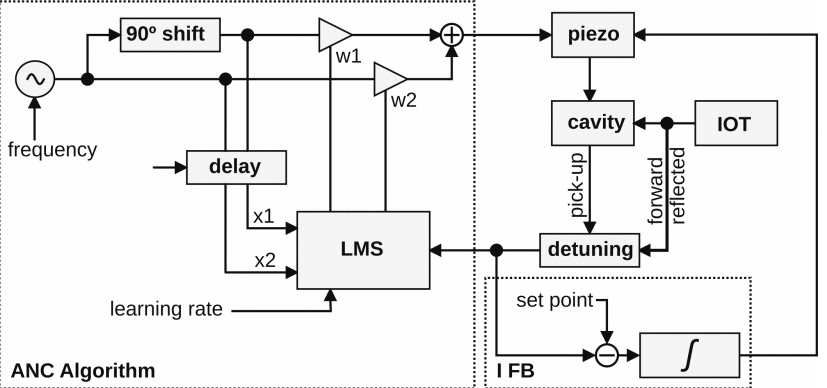Abstract
 |
Modern digital low level radio frequency (LLRF) control systems used to stabilize the accelerating field in facilities such as Free Electron Laser in Hamburg (FLASH) or European X-Ray Free Electron Laser (E-XFEL) are based on the Field Programmable Gate Array (FPGA) technology. Presently these accelerator facilities are operated with pulsed RF. In future, these facilities should be operated with continuous wave (CW) which requires significant modifications on the real-time feedbacks realized within the FPGA. For example, higher loaded quality factor of the cavities when operated in a CW mode requires sophisticated resonance control methods. However, iterative learning techniques widely used for machines operated in pulsed mode are not applicable for CW. In addition, the mechanical characteristic of the cavities have now a much more important impact on the choice of the feedback scheme. To overcome the limitations of classical PI-controllers novel realtime adaptive feed forward algorithm is implemented in the FPGA. Also, the high power RF amplifier which is an inductive output tube (IOT) for continuous wave operation instead of a klystron for the pulsed mode has major impact on the design and implementation of the firmware for regulation. In this paper, we report on our successful approach to control multi-cavities with ultra-high precision (dA/A<;0.01%, dphi<;0.02 deg) using a single IOT source and individual resonance control through piezo actuators. Performance measurements of the proposed solution were conducted at Cryo Module Test Bench (CMTB) facility. |
Radoslaw Rybaniec et al., FPGA-Based RF and Piezocontrollers for SRF Cavities in CW Mode, IEEE Trans. Nucl. Sci.